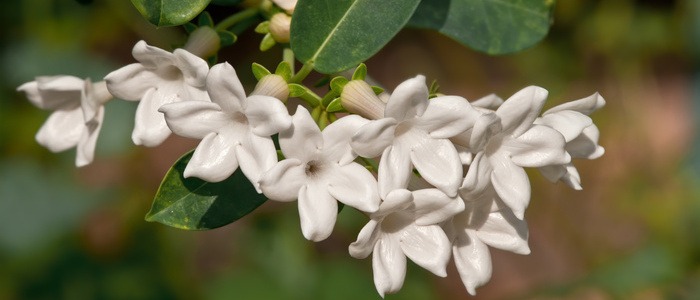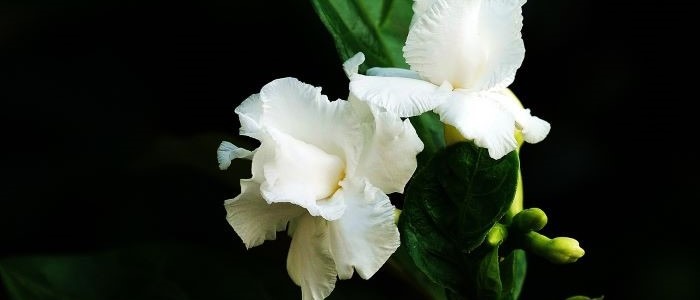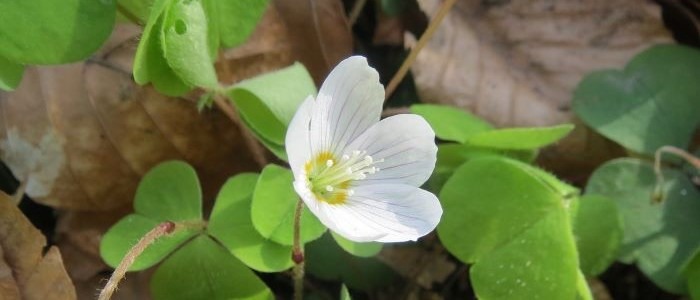If you’re looking for an attractive, easy-to-care-for plant to add to your indoor garden, the Hoya Bella (Hoya carnosa) is a great choice. Also known as the porcelain flower, this beautiful and unique plant can bring joy and life to any home while also being relatively low maintenance. In this article, we’ll provide an in-depth guide on how to successfully grow and care for the Hoya Bella indoors.
You’ll learn all about its light requirements, temperature and humidity needs, water and fertilizer requirements, pruning and repotting guidelines, propagating methods, and common issues with growing the plant indoors. If you follow our advice carefully, you can look forward to having a vibrant Hoya Bella that will thrive!

Hoya Bella Plant Frequently Asked Questions
How often do you water a Hoya Bella?
When it comes to watering Hoya Bella plants, it is important to strike a balance. While it can tolerate slight periods of dryness, it is still essential to keep the soil consistently moist, but not overly saturated. As a general rule, watering once a week should be sufficient, but it is always best to check the soil moisture level before watering to ensure it has dried out slightly. Adjust the frequency based on the specific conditions of your environment, such as temperature and humidity. Remember, it is better to underwater than overwater a Hoya Bella plant.
Are Hoya bellas climbing plants?
Yes, Hoya bellas are climbing plants they have long, trailing vines that can grow several feet in length if given the proper support. They are known for their ability to cling onto surfaces such as trellises, fences, or even other plants, using their aerial roots. This makes them a popular choice for adding a touch of natural beauty and greenery to your indoor or outdoor space.
Light Requirements for the Hoya Bella
The Hoya Bella is a beautiful and unique plant that is relatively easy to care for, and is a great addition to any indoor garden. One of the most important requirements for growing this plant successfully indoors is adequate light. This article will explain the ideal light conditions for the Hoya Bella, as well as what to avoid.
Hoya Bella plants prefer bright, indirect light and should be kept away from direct sunlight to avoid burning the foliage. If you are growing your Hoya Bella indoors, place it near an east- or west-facing window so that it can enjoy some morning or late afternoon sun while avoiding harsh midday rays. During the summer months when sunlight is usually more intense, you may move your plant to a south-facing window if needed – just make sure it’s not exposed to direct sun during this time either.
During winter months when sunlight is usually less intense, supplement natural light with artificial lighting if necessary. A combination of natural and artificial lighting (such as grow lights) should provide sufficient amounts of light for your Hoya Bella without causing any damage due to overexposure. It’s also important to remember that different types of lighting have different intensity levels – so be sure to do some research on which type of lighting will work best!
By providing these ideal conditions for your Hoya Bella in terms of adequate light exposure, you can be sure that this beautiful and unique plant will thrive in your home!
Temperature and Humidity Needs of the Hoya Bella
When it comes to the temperature and humidity needs of the Hoya Bella, there are certain guidelines that should be followed in order to ensure optimal growth and health. The ideal temperature for a Hoya Bella is between 65-80°F. Temperatures outside of this range may cause damage or even death to the plant. Additionally, proper air circulation should be provided to allow the plant to absorb oxygen and remove carbon dioxide from its leaves.
Maintaining an ideal humidity level is also important for a Hoya Bella’s health. An optimal level of humidity lies between 40-50%, which can be achieved by misting the leaves regularly with water or using a humidifier near the plant. For best results, avoid placing your Hoya Bella near radiators, air conditioners, or other sources of strong drafts as these can cause drying of the foliage and subsequent death.
Finally, proper ventilation is key for a healthy Hoya Bella indoors – especially when placed in enclosed spaces like balconies or terraces with limited airflow. If this is the case for your home, you can open windows or doors for several minutes every day to allow fresh air into your home and increase air circulation around your plant.
By following these guidelines on temperature and humidity needs of a Hoya Bella, readers will have all they need to successfully grow and care for their plants indoors. With this knowledge, they can make sure that their plants receive all they need in terms of light, temperature, humidity levels and ventilation – helping them enjoy their beautiful plants year round!
Water and Fertilizer Requirements for the Hoya Bella
When caring for a Hoya Bella indoors, it is important to be aware of the water and fertilizer needs of the plant. The best type of water to use on your Hoya Bella is room temperature or lukewarm distilled water, as this will reduce the risk of any minerals in tap water damaging the plant.
Watering frequency depends on the environment in which the plant is placed; however, it should generally be done once every two weeks and when soil moisture levels are low. It is important not to over-water the plant as it can lead to root rot.
The soil moisture level should be monitored closely by inserting a finger into the potting mix – if it feels dry, then it’s time to water. Additionally, humidity levels should also be monitored carefully; too much dry air can cause leaves to become dry and brittle. To increase humidity levels around your Hoya Bella, mist them regularly with room temperature or lukewarm distilled water or consider using a humidifier.
Fertilizing your Hoya Bella helps provide essential nutrients that help promote healthy growth and flowering potential. However, fertilizing too often can burn their roots so use only half-strength liquid fertilizer applied every two months during spring and summer months when they are actively growing. When repotting your Hoya Bella, make sure you select a new pot that is one size larger than its current one – this will give adequate space for root development while allowing easy maintenance for watering purposes.
By following these tips on watering and fertilizing requirements for your Hoya Bella indoor plant, you can ensure that they receive all the right nutrients needed for healthy growth and longevity!
Pruning and Repotting Guidelines for the Hoya Bella
Pruning and repotting are important activities for maintaining the health and growth of your Hoya Bella indoors. Pruning helps to keep the plant from becoming too leggy or unruly, while repotting ensures that it has enough space to grow healthy roots.
To prune your Hoya Bella, use a pair of clean scissors or shears to snip away any dead leaves or stems. Prune back any branches that have grown too long or have become tangled and unkempt. This will help promote new growth and encourage a bushier structure for the plant overall.
When it comes time to repot your Hoya Bella, use a potting soil mix with plenty of perlite or pumice for drainage. The pot should be one size larger than its current one in order to give it enough room to grow its roots. When repotting, make sure you disturb the root ball as little as possible so as not to damage the roots in the process.
Propagating your Hoya Bella is also easy; simply prune off healthy stems and allow them some time to dry before planting them in their own containers. It is also important to fertilize during the growing season with a balanced fertilizer such as 10-10-10 NPK blend at half strength every two months during spring and summer months when they are actively growing.
Following these guidelines will help ensure that you have a healthy and thriving Hoya Bella indoors!
Propagating the Hoya Bella
.
Propagating the Hoya Bella is a great way to increase your plant collection without having to purchase new plants. The process is relatively simple and requires only a few steps. To propagate the Hoya Bella, take leaf or stem cuttings from the tip of the stem, ensuring that each cutting has at least two leaves and a short stem. Place the cuttings in a potting mix with good drainage, such as a mix of peat moss and perlite, and keep them in bright, indirect sunlight. With proper care and attention, these cuttings can become healthy new plants.
To ensure successful propagation of your Hoya Bella cuttings, several factors should be taken into account before you begin. Firstly, it is important to use clean scissors or shears when pruning. This will help prevent any bacteria or fungi from being spread during the pruning process which could cause disease issues for your plants down the line. It is also important to select healthy stems with plenty of leaf material for propagation – this will give them their best chance of taking root successfully.
Once your cuttings are in place in their new soil mixes, they should be kept moist but not overly wet – too much water can cause root rot if it isn’t drained away quickly enough from around the base of the cutting. A light misting every day or two should suffice for keeping moisture levels up without over-saturating them. Temperatures around 70-80°F are ideal for propagating Hoya Bellas indoors; cool temperatures may slow down growth rate while excessively hot temperatures can cause wilting and stunted growth in some cases.
In addition to providing adequate warmth and humidity levels during propagation stages, it’s important to provide plenty of bright light as well – direct sunlight is not recommended as it may scorch delicate leaves but bright indirect light throughout most of the day is necessary for optimal growth rates during this stage of development. Finally, fertilize lightly (at half strength) once every two months while actively growing (spring/summer) with a balanced fertilizer such as 10-10-10 NPK blend to provide essential nutrients that will aid in successful propagation rates overall.
Following these tips and guidelines will ensure that you have successful results when propagating your Hoya Bella indoors! With patience and dedication you can enjoy beautiful blooms all year round without needing to purchase additional plants!
Common Issues with Growing the Hoya Bella Indoors
When it comes to growing the Hoya Bella indoors, there are several common issues that can arise. Pests such as spider mites, mealybugs, and aphids can be a problem for the plant and can be difficult to get rid of. To prevent pests from taking over your Hoya Bella, it is important to inspect the plant regularly and take action if any pests are spotted.
Spider mites can usually be eliminated with a pesticide spray or neem oil solution; however, you should make sure to follow the instructions on the label carefully before using these products. Mealybugs and aphids require more intensive treatment and may require multiple applications of insecticidal soap or horticultural oil.
Too much light can also be an issue if the Hoya Bella is placed near windows or in direct sunlight. The plant needs bright indirect light for optimal growth, but too much direct sunlight will scorch its leaves and cause them to turn yellow or brown. If you notice this happening, move your Hoya Bella away from direct sunlight and into a spot with bright indirect light instead.
Overwatering or underwatering can also lead to root rot or cause the leaves to become yellow or brown (from overwatering) and crispy and dry (from underwatering). To avoid this issue, make sure you only water your Hoya Bella when necessary – when at least half of the soil has dried out – and check its soil moisture level regularly using a moisture meter or by poking your finger into it up until about an inch deep. Additionally, making sure that you select a pot with good drainage will help reduce the risk of root rot caused by overwatering.
Finally, temperature fluctuations can also cause problems for your Hoya Bella indoors. Make sure not to place it near heaters that may dry out its leaves quickly or put it close to air conditioning units that may lower temperatures too drastically during cold months. Keeping consistent temperatures between 65-80°F should ensure healthy growth for your Hoya Bella indoors throughout all seasons of the year!
Conclusion
The Hoya Bella is a beautiful and unique plant that can thrive indoors with the right care and attention. Growing the Hoya Bella requires patience, as it may take some time for the plant to adjust to its new environment and reach its full potential. It is also important to have the right tools on hand for successful indoor gardening, such as a humidifier or thermometer to monitor temperature and humidity levels.
If you’re looking for resources on indoor gardening and plant care, there are plenty of websites, books, magazines, or articles out there that can help you learn more about growing plants indoors. Additionally, there are other plants that require similar care as the Hoya Bella and can be grown alongside it in order to create an attractive display in your home or office space.
Ultimately, it’s important to remember that while growing any type of plant indoors poses some challenges due to environmental limitations, taking the time to provide your Hoya Bella with adequate light, temperature range, humidity levels, water and fertilizer requirements will ensure a healthy and thriving plant. With these tips in mind you should have no problem creating an inviting atmosphere with your own personal indoor garden!
Other White House Plants












